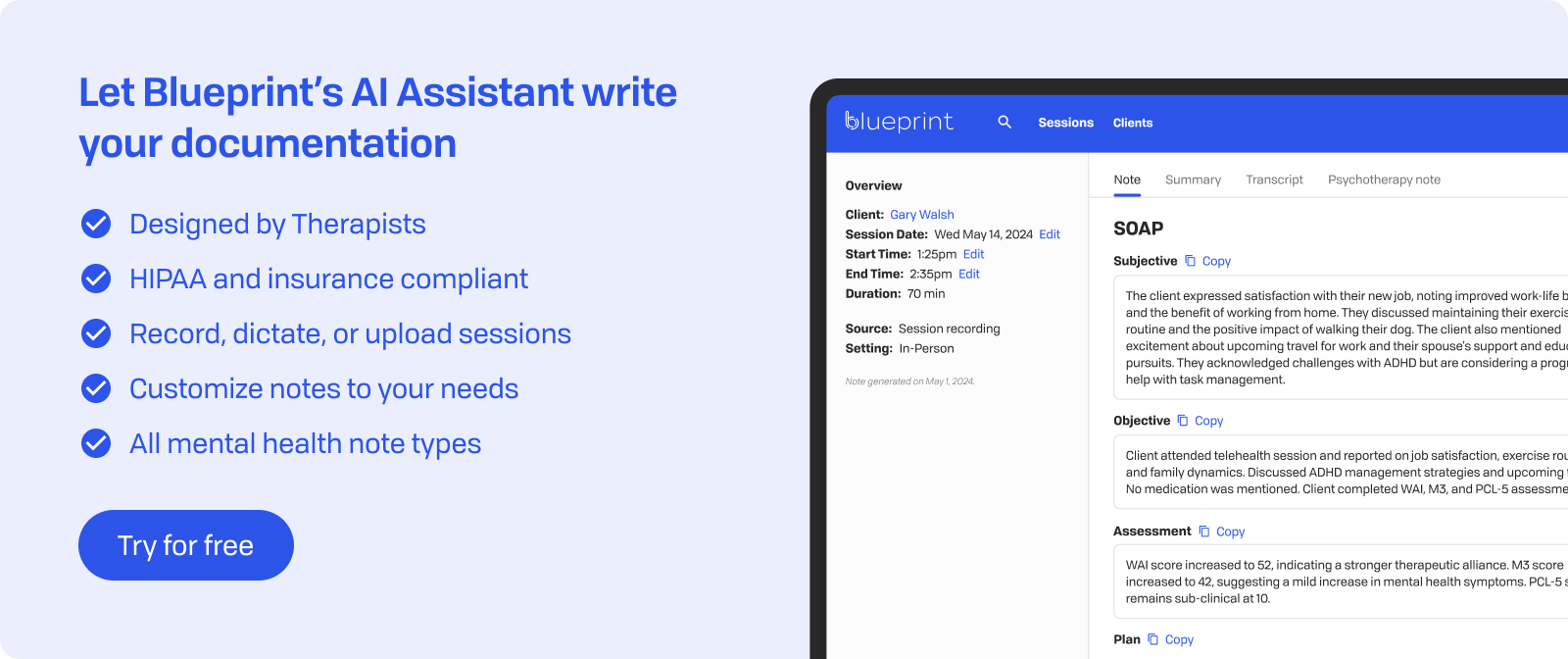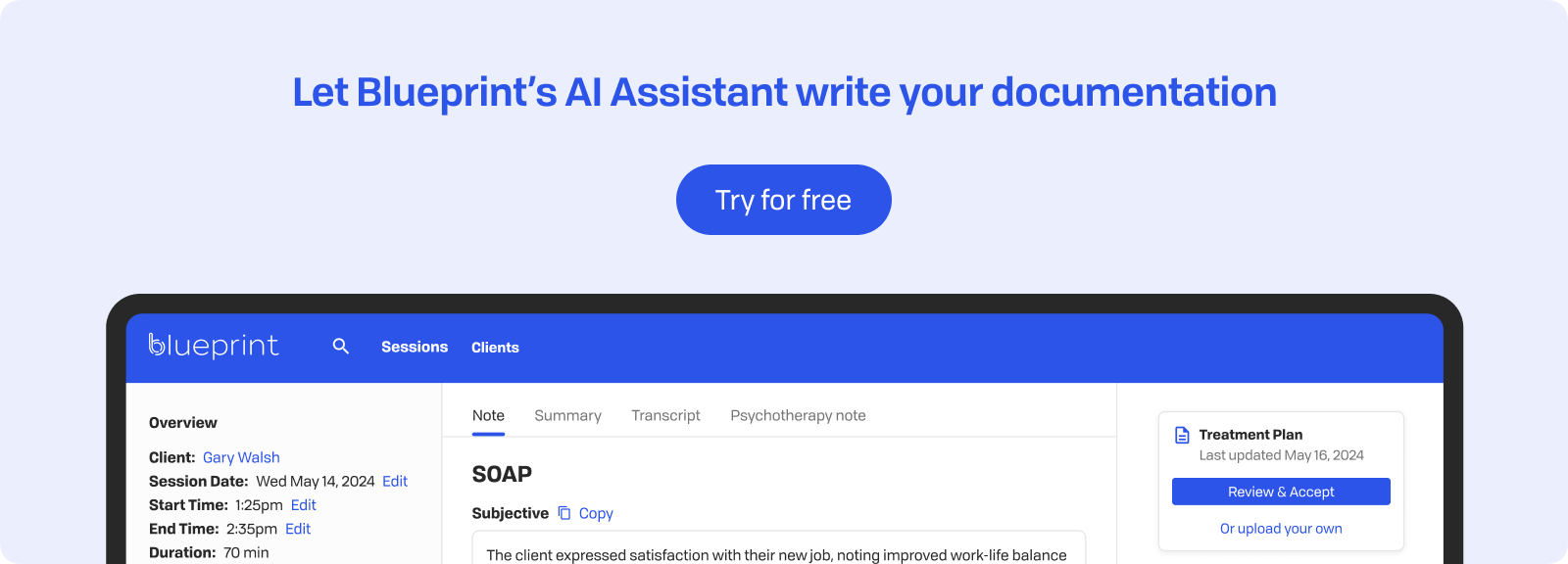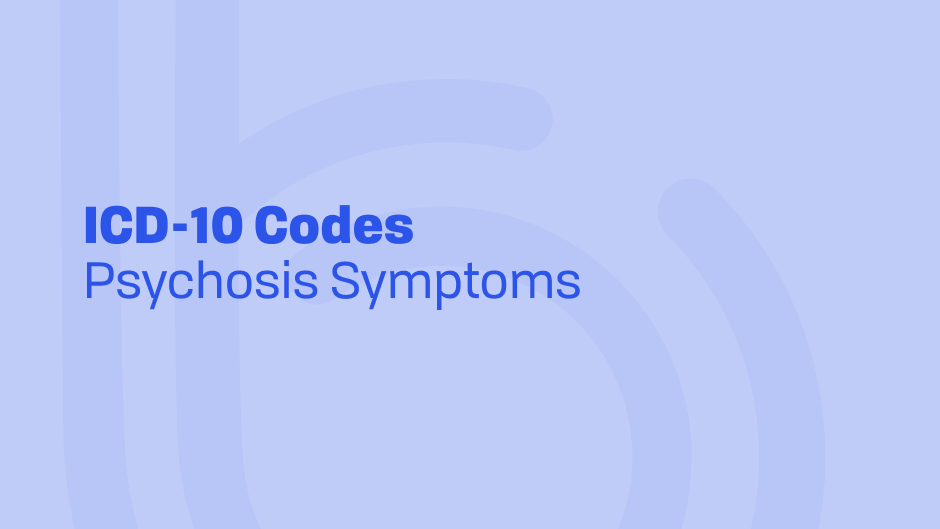In Brief
Working with clients experiencing psychotic symptoms presents both challenges and rewards in clinical practice. These complex cases require careful assessment and tailored treatment approaches. Knowing how to classify and code psychosis ensures accurate documentation and effective treatment planning.
The ICD-10 system offers a detailed framework for categorizing psychotic disorders. It helps clinicians differentiate between various presentations and severity levels. Proper coding not only supports insurance reimbursement and aids communication between providers but also plays a critical role in determining access to services and benefits, such as Social Security disability, workplace accommodations, and other supports that can significantly affect a client’s quality of life.
Whether you encounter psychosis within schizophrenia spectrum disorders, mood episodes, or substance-induced conditions, an accurate diagnosis matters. Let’s look at how the ICD-10 organizes these complex presentations. This information supports effective treatment planning and clinical documentation.
Understanding Psychosis in ICD-10
Psychosis involves a disruption in reality testing, marked by hallucinations, delusions, disorganized thinking, or disorganized behavior. ICD-10 classifies psychotic disorders mainly in the F20-F29 category, covering schizophrenia, schizotypal disorders, delusional disorders, and other psychotic conditions.
Key ICD-10 Psychotic Disorder Codes
- F20 – Schizophrenia
- F20.0: Paranoid schizophrenia
- F20.1: Hebephrenic (disorganized) schizophrenia
- F20.2: Catatonic schizophrenia
- Other subtypes also exist, including undifferentiated and residual
- F21 - Schizotypal disorder
- F22 - Delusional disorders
- F23 – Acute and transient psychotic disorders
- Includes brief psychotic disorder presentations
- Includes brief psychotic disorder presentations
- F24 – Shared psychotic disorder
- F25 – Schizoaffective disorders
- F28 – Other psychotic disorder not due to a substance or known physiological condition
- F29 – Other psychotic disorder not due to a substance or known physiological condition
- Used as a provisional diagnosis when criteria for a more specific psychotic disorder are not fully met

The diagnostic criteria emphasize positive symptoms like hallucinations and delusions, while also considering negative symptoms such as diminished motivation, reduced speech, and flattened affect. Duration requirements vary: schizophrenia requires symptoms to be present for at least one month, whereas some acute psychotic disorders may have much shorter thresholds.
Distinguishing psychotic disorders from mood disorders with psychotic features requires careful assessment of symptom timing and predominance. In mood disorders, psychotic symptoms occur only during mood episodes. Primary psychotic disorders show symptoms that persist beyond mood disturbances or occur independently.
Dissociative disorders can mimic psychosis, especially with identity confusion and amnesia. However, dissociation typically retains some connection to reality and lacks true hallucinations or fixed delusions. The experience differs, with dissociation feeling more like disconnection than false perception.
Substance-induced psychotic disorders need separate coding that identifies both the psychosis and the causative substance. These are found in substance-specific sections rather than F20-F29. Psychotic disorders due to medical conditions have distinct codes reflecting the underlying cause.
Using ICD-10 Codes and the DSM-5-TR Framework for Psychosis
It’s important to recognize that many clinicians in the U.S. and elsewhere also work within the DSM-5-TR framework but use ICD-10 codes for billing. Understanding how DSM-5-TR organizes psychotic disorders provides helpful context for clinical assessment, differential diagnosis, and treatment planning, especially when collaborating across systems or explaining a diagnosis to clients and families.
Similar to ICD-10, DSM-5-TR has a category called Schizophrenia Spectrum and Other Psychotic Disorders. It emphasizes positive symptoms such as hallucinations and delusions, while also recognizing negative symptoms as core features of schizophrenia. A key difference between the ICD-10 and DSM-5-TR diagnoses is in duration requirements. For example, DSM-5-TR requires six months of illness for a schizophrenia diagnosis, compared to ICD-10’s one-month threshold. DSM-5-TR also includes additional, explicitly defined categories such as delusional disorder and psychotic disorders linked to substances or medical conditions.
DSM-5-TR Schizophrenia Spectrum and Other Psychotic Disorders include:
- Schizophrenia – at least six months of illness with one month of active-phase symptoms.
- Schizophreniform disorder – similar features but lasting one to six months.
- Brief psychotic disorder – symptoms lasting at least one day but less than one month.
- Delusional disorder – persistent delusions for at least one month without other major psychotic features.
- Schizoaffective disorder – mood episodes (depressive or manic) occur alongside psychotic symptoms, with psychosis persisting for at least two weeks in the absence of mood symptoms.
- Substance/medication-induced psychotic disorder – psychosis directly attributable to substances or medications.
- Psychotic disorder due to another medical condition – psychosis linked to a medical illness.
- Other specified or unspecified psychotic disorders – used when symptoms cause impairment but do not fully meet criteria for a defined disorder.
Together, these categories highlight the broader scope and duration-specific distinctions emphasized in DSM-5-TR. For clinicians, being familiar with both DSM-5-TR and ICD-10 ensures accurate coding, thorough assessment, and clearer communication across care systems.

Clinical Presentation in Therapy Settings
Recognizing psychosis in therapy involves paying attention to both positive and negative symptoms. Positive symptoms include:
- Hallucinations: False sensory experiences, most commonly auditory (hearing voices), but also visual, tactile, or olfactory
- Delusions: Fixed false beliefs resistant to contrary evidence, including persecutory, grandiose, or referential themes
- Disorganized thought: Seen in tangential speech, loose associations, or word salad
- Disorganized behavior: Unpredictable agitation, inappropriate affect, or catatonic movements
Negative symptoms often prove more challenging to identify:
- Avolition: Decreased motivation and goal-directed behavior
- Alogia: Poverty of speech or thought
- Anhedonia: Reduced ability to experience pleasure
- Affective flattening: Diminished emotional expression
- Social withdrawal: Isolation from others
Cultural and Developmental Considerations
Cultural context strongly influences how psychotic symptoms are expressed, understood, and interpreted. Beliefs about mental health, spirituality, and illness vary widely across cultures and can shape both the content of symptoms and the ways individuals seek help. For example, auditory or visual experiences may be framed as spiritual or religious in some communities, while the same experiences may be pathologized in others. Importantly, research shows that diagnostic bias also plays a role: historically, Black clients in the U.S. have been disproportionately diagnosed with schizophrenia, particularly when White clinicians interpret guardedness or mistrust as paranoia. Such disparities highlight the need for cultural humility and awareness of systemic and individual bias in assessment.
Developmental stage also affects presentation. Adolescents may demonstrate more disorganized thought and behavior, while older adults may be more likely to present with fixed or structured delusional systems. Age-related factors—such as brain development in youth or cognitive decline in later life—can influence both symptom expression and the clinician’s interpretation.
Before confirming a psychosis diagnosis, rule out medical causes including neurological conditions, endocrine disorders, and autoimmune diseases. Substance-induced psychosis from stimulants, cannabis, or hallucinogens requires careful assessment of temporal relationships between use and symptoms. Laboratory tests, neuroimaging, and thorough substance use history support accurate differential diagnosis and appropriate ICD-10 coding.

Differential Diagnosis and Comorbidity
Identifying differences between psychosis and trauma-related symptoms requires careful clinical assessment. PTSD can manifest with dissociative symptoms, flashbacks, and hypervigilance that may resemble psychotic symptoms, yet these experiences usually maintain some connection to the traumatic event and lack the fixed nature of true delusions.
Key distinguishing features include:
- Insight preservation: Trauma-related intrusions are typically recognized as memories, while psychotic hallucinations lack this awareness.
- Content specificity: PTSD symptoms directly relate to traumatic experiences; psychotic symptoms often have bizarre or unrelated themes.
- Temporal patterns: Trauma symptoms fluctuate with triggers; psychosis tends to be more persistent.
- Response to grounding: Dissociative symptoms often improve with grounding techniques; psychotic symptoms typically don't.
Mood-congruent psychotic features occur exclusively during mood episodes and align with the emotional state. In major depression with psychotic features (F32.3), delusions may involve guilt, worthlessness, or nihilism. Manic episodes with psychosis (F30.2) may feature grandiose delusions matching the elevated mood.
Common comorbidities complicate diagnosis:
- Depression: Mood symptoms are often present, particularly in early stages of illness.
- Substance use disorders: Cannabis, stimulants, and alcohol frequently co-occur and influence the onset, course, or severity of symptoms
- Anxiety disorders: Often precede or accompany psychotic symptoms.
- PTSD: Trauma histories and PTSD are commonly seen in individuals with psychosis and can shape symptom presentation.
Thorough assessment prevents misdiagnosis through structured interviews, collateral information, timeline mapping of symptoms, and screening tools for trauma, mood, and substance use. Accurate ICD-10 coding requires documenting all co-occurring conditions separately, ensuring comprehensive treatment planning addresses the full clinical picture.
Documentation and Coding Considerations
Accurate ICD-10 coding for psychosis requires careful documentation that captures the full clinical picture. Your treatment notes should detail specific symptoms observed, their duration, severity, and impact on functioning. Include direct quotes when clients describe hallucinations or delusions, noting their insight level and emotional response to these experiences.
When recording psychosis-related codes, ensure your documented observations align with the selected diagnosis:
- Primary diagnosis specificity: Choose the most precise code available (e.g., F20.0 for paranoid schizophrenia rather than F20.9 unspecified)
- Symptom documentation: Record positive symptoms (hallucinations, delusions) and negative symptoms (avolition, alogia) with examples
- Temporal factors: Note symptom onset, duration, and any periods of remission
- Functional impact: Document how symptoms affect work, relationships, and daily activities
- Treatment response: Track medication adherence and therapeutic intervention outcomes
Unspecified psychosis codes (F29) serve a useful purpose during initial assessments or when full criteria aren't met. Use these codes responsibly when:
- Initial evaluation pending: More information needed from collateral sources or medical workup
- Symptom duration insufficient: Psychotic symptoms present but haven't met time criteria for specific disorders
- Atypical presentations: Clinical picture doesn't clearly fit established diagnostic categories
- Provisional diagnosis: Substance-induced psychosis suspected but not confirmed
Remember that unspecified codes should be temporary placeholders. Update to more specific codes as clinical information becomes available. Document your reasoning for using unspecified codes and your plan for clarifying the diagnosis through continued assessment, consultation, or observation over time.

Treatment Planning for Psychosis
Effective treatment for psychosis depends on coordinated care between therapists and psychiatrists. Medication management plays the primary role in treating most psychotic disorders, with antipsychotics helping stabilize acute symptoms and prevent relapse. The therapist role often includes providing psychoeducation, supporting treatment adherence, helping clients process the impact of symptoms on daily life, and engaging families or support systems in care. Additionally, keeping in regular contact with prescribing providers helps ensure continuity of care.
Psychotherapy works alongside medication through several evidence-based approaches:
- Cognitive Behavioral Therapy for psychosis (CBTp): Assists clients in rethinking distressing interpretations of hallucinations and delusions, reducing conviction and emotional impact. Sessions target specific symptoms rather than eliminating them entirely.
- Supportive psychotherapy: Offers emotional validation, reality testing, and practical problem-solving while strengthening the therapeutic alliance.
- Family interventions: Educate family members about psychosis, improve communication patterns, and reduce high expressed emotion that can trigger relapse.
Crisis planning remains vital due to the episodic nature of psychotic disorders. Develop clear safety plans identifying early warning signs, coping strategies, and emergency contacts. Include specific triggers, initial symptoms like sleep disruption or social withdrawal, and concrete steps for intervention.
Relapse prevention combines medication adherence strategies, stress management techniques, and regular symptom monitoring. Help clients recognize their unique relapse signatures and create personalized action plans.
Psychoeducation helps clients and families understand psychosis as a treatable condition. Cover topics including symptom recognition, medication importance, stress-vulnerability models, and recovery expectations. Normalize the experience while maintaining realistic hope for functional improvement. Document all interventions using appropriate ICD-10 codes to ensure continuity across treatment settings.
Therapist Role and Ethical Considerations
Building a therapeutic alliance with clients experiencing psychosis involves balancing empathy with clinical boundaries. The severity of symptoms can challenge traditional therapeutic approaches, requiring flexibility while maintaining professional structure. Your role goes beyond symptom management to creating a safe space where clients feel heard despite experiencing an altered reality.
Safety concerns need proactive risk protocols. Regularly assess for harm to self or others, documenting any command hallucinations, paranoid thoughts affecting behavior, or deteriorating self-care. Establish clear safety plans that include:
- Emergency contacts: Psychiatrist, crisis hotline, local psychiatric emergency response team, trusted family members
- Warning signs: Specific behaviors indicating decompensation
- Coping strategies: Grounding techniques, medication reminders, support system activation
- Hospitalization criteria: Clear thresholds for higher level care
Managing countertransference is important when working with clients experiencing psychosis. Common reactions include frustration with fixed delusions, anxiety about unpredictability, or overidentification with client distress. Regular supervision helps process these responses while maintaining therapeutic effectiveness.
Therapist strategies for treatment include:
- Adopting curiosity over confrontation: Explore delusional content without challenging directly
- Focusing on distress rather than symptoms: Address emotional impact instead of reality testing
- Taking session breaks: Recognize emotional fatigue for both client and therapist and pace accordingly
- Maintaining professional boundaries: Balance compassion with clinical distance
Ethical practice demands accurate ICD-10 coding that reflects actual symptoms without over-pathologizing. Document observable behaviors rather than assumptions, ensuring diagnoses serve treatment planning rather than labeling. Regular consultation supports both clinical accuracy and therapist resilience in this challenging but rewarding work.

Key Takeaways
ICD-10 offers structured guidance for diagnosing and documenting psychosis, providing therapists with a detailed framework to capture the complexity of psychotic presentations. Its specificity ensures accurate billing, effective communication between providers, and treatment planning tailored to each client's unique needs.
Differential assessment remains important for accuracy and effective treatment. Distinguishing true psychosis from trauma-related symptoms, mood disorders with psychotic features, or substance-induced presentations directly influences treatment approach and outcomes. Thorough evaluation includes:
- Symptom timeline: Mapping onset, duration, and relationship to life events
- Cultural context: Considering how background shapes symptom expression and interpretation
- Medical workup: Ruling out organic causes before confirming psychiatric diagnosis
- Collateral information: Gathering perspectives from family or previous providers
Therapists have a vital role beyond diagnosis in building therapeutic alliances, providing psychoeducation, and offering ongoing support. Creating safety while navigating severe symptoms helps clients engage in treatment even when experiencing an altered reality. This involves balancing empathy with clinical boundaries and maintaining hope while being realistic about recovery paths.
Ethical practice in psychosis treatment requires careful coding that reflects observed symptoms without over-pathologizing, regular collaboration with psychiatrists and other providers, and ongoing self-awareness about countertransference reactions. Documentation should capture the full clinical picture while avoiding stigmatizing language. Regular supervision and consultation support both accurate diagnosis and therapist wellbeing when working with this challenging population. The combination of precise ICD-10 coding and compassionate clinical care forms the foundation for effective psychosis treatment.

How Blueprint can help streamline your workflow
Blueprint is a HIPAA-compliant AI Assistant built with therapists, for the way therapists work. Trusted by over 50,000 clinicians, Blueprint automates progress notes, drafts smart treatment plans, and surfaces actionable insights before, during, and after every client session. That means saving about 5-10 hours each week — so you have more time to focus on what matters most to you.
Try your first five sessions of Blueprint for free. No credit card required, with a 60-day money-back guarantee.
























